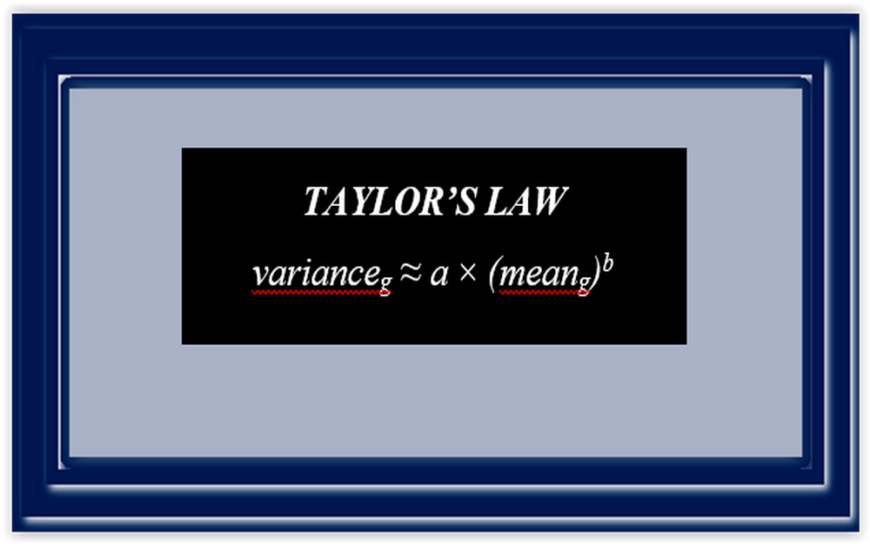Taylor’s Law and the Relationship between Life Expectancy at Birth and Variance in Age at Death in a Period Life Table
David A. Swanson, Lucky M. Tedrow
Population Review
Volume 61, Number 1, 2022
Abstract:
Mean age at death in a period life table is a major indicator of population health, as is the table’s variance in age at death. Taylor’s Law is a widely observed empirical pattern that relates variances to means in sets of non-negative measurements via an approximate power function. It has found application to human mortality. We add to this research by showing that Taylor’s Law leads to a model that reasonably describes the relationship between mean age at death in a life table (which is the same as life expectancy at birth) and the life table’s variance in age at death. We built a demonstration model, tested its accuracy, and found that it provides reasonably accurate estimates of variance in age at death in a life table. Employing independent data, the model was used to provide estimates of variance at age in death for six countries, three of which have high levels of life expectancy at birth and three of which have lower levels. The two parameters in Taylor’s Law, a and b, can be interpreted, respectively, as: (1) a ≈ the product of life expectancy at birth and the sum of mean years lived and mean years remaining; and (2) b ≈ the square of life expectancy at birth. This provides Taylor’s Law with a theoretical foundation when it is used to estimate variance in age at death in life tables constructed for human and other species. A significant strength of our application is that where mean age at death itself is estimated, it provides an estimate of variance in age at death that may not otherwise be available. This is useful because major agencies have produced estimates of life expectancy at birth for small areas. We illustrate this important application of the TL Method using empirical data and conclude that there is a need for a model that can produce accurate estimates of variance in age at death in a life table.
Population Review
Volume 61, Number 1, 2022
Type: Article, pp. 31-42
Taylor’s Law and the Relationship between Life Expectancy at Birth and Variance in Age at Death in a Period Life Table
Authors: David A. Swanson and Lucky M. Tedrow
Authors affiliations: University of California Riverside; Center for Studies in Demography and Ecology, University of Washington; Social Science Research Center, Mississippi State University (Swanson); Demographic Research Laboratory, Department of Sociology, Western Washington University, Bellingham, WA (Tedrow)
Corresponding author/address: David Swanson, Dickson Emeritus Professor, University of California Riverside; Faculty Affiliate, Center for Studies in Demography and Ecology, University of Washington; Research Fellow, Social Science Research Center, Mississippi State University;
email: dswanson@ucr.edu
Abstract
Mean age at death in a period life table is a major indicator of population health, as is the table’s variance in age at death. Taylor’s Law is a widely observed empirical pattern that relates variances to means in sets of non-negative measurements via an approximate power function. It has found application to human mortality. We add to this research by showing that Taylor’s Law leads to a model that reasonably describes the relationship between mean age at death in a life table (which is the same as life expectancy at birth) and the life table’s variance in age at death. We built a demonstration model, tested its accuracy, and found that it provides reasonably accurate estimates of variance in age at death in a life table. Employing independent data, the model was used to provide estimates of variance at age in death for six countries, three of which have high levels of life expectancy at birth and three of which have lower levels. The two parameters in Taylor’s Law, a and b, can be interpreted, respectively, as: (1) a ≈ the product of life expectancy at birth and the sum of mean years lived and mean years remaining; and (2) b ≈ the square of life expectancy at birth. This provides Taylor’s Law with a theoretical foundation when it is used to estimate variance in age at death in life tables constructed for human and other species. A significant strength of our application is that where mean age at death itself is estimated, it provides an estimate of variance in age at death that may not otherwise be available. This is useful because major agencies have produced estimates of life expectancy at birth for small areas. We illustrate this important application of the TL Method using empirical data and conclude that there is a need for a model that can produce accurate estimates of variance in age at death in a life table.
Keywords
Human Mortality Data Base, Income Inequality, Mean Age at Death, Socio-Economic Status
© 2022 Sociological Demography Press
MLA
Drioui, Chaimae and Fatima Bakass. “Fertility Preferences and Outcomes in Morocco: Does Women’s Empowerment Matter in Actual-ideal Gap?” Population Review, vol. 61 no. 1, 2022, p. 1-30. Project MUSE muse.jhu.edu/article/842810.
APA
Drioui, C., & Bakass, F. (2022). Fertility Preferences and Outcomes in Morocco: Does Women’s Empowerment Matter in Actual-ideal Gap?Population Review 61(1), 1-30. https://www.muse.jhu.edu/article/842810.
Chicago
Drioui, Chaimae, and Fatima Bakass. “Fertility Preferences and Outcomes in Morocco: Does Women’s Empowerment Matter in Actual-ideal Gap?” Population Review 61, no. 1 (2022): 1-30. muse.jhu.edu/article/842810.
Endnote
TY – JOUR T1 – Fertility Preferences and Outcomes in Morocco: Does Women’s Empowerment Matter in Actual-ideal Gap? A1 – Drioui, Chaimae A1 – Bakass, Fatima JF – Population Review VL – 61 IS – 1 SP – 1 EP – 30 PY – 2022 PB – Sociological Demography Press SN – 1549-0955 UR – https://muse.jhu.edu/article/842810 N1 – Volume 61, Number 1, 2022 ER –
Always review your references for accuracy and make any necessary corrections before using. Pay special attention to personal names, capitalization, and dates. Consult your library for more information on citing sources.




